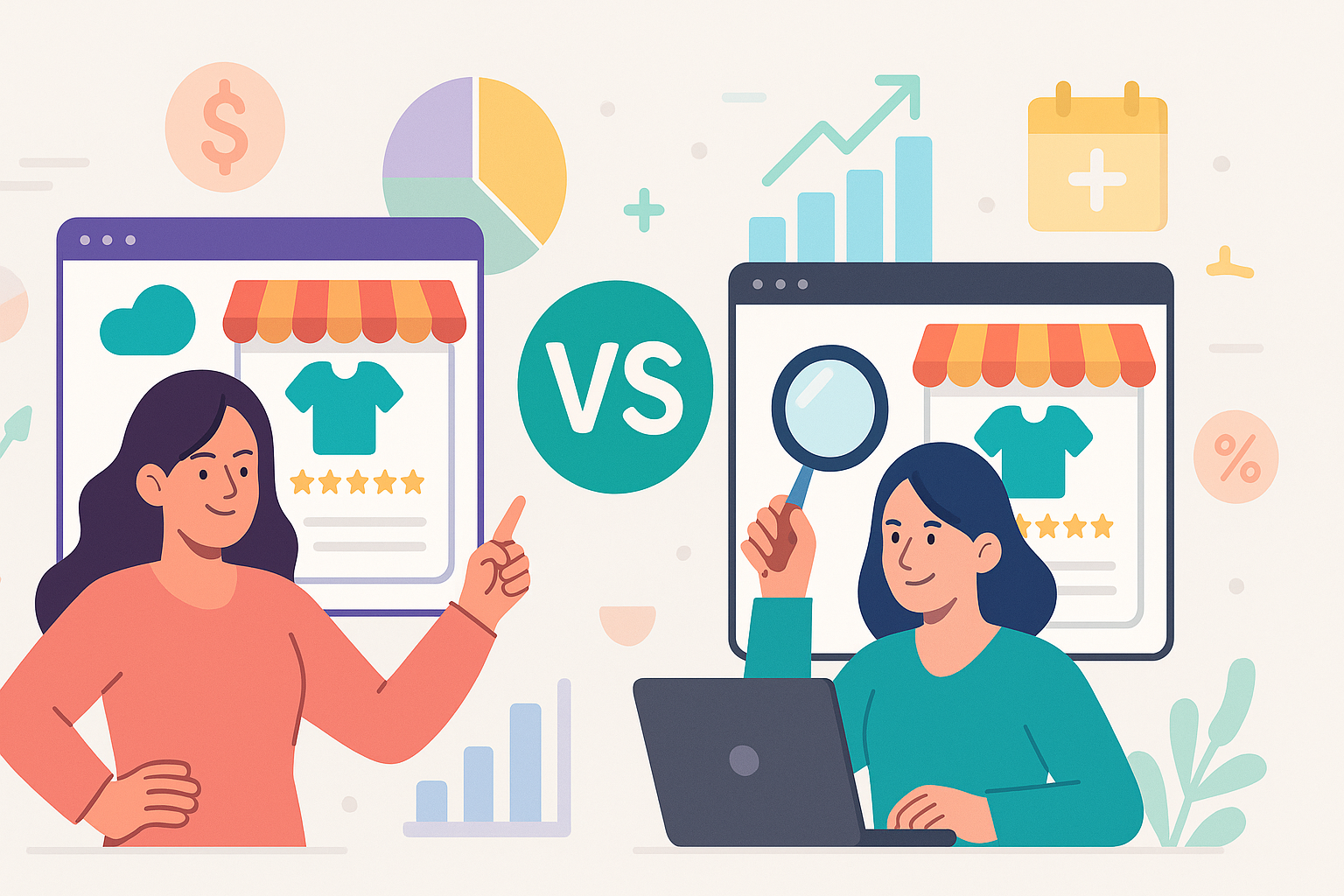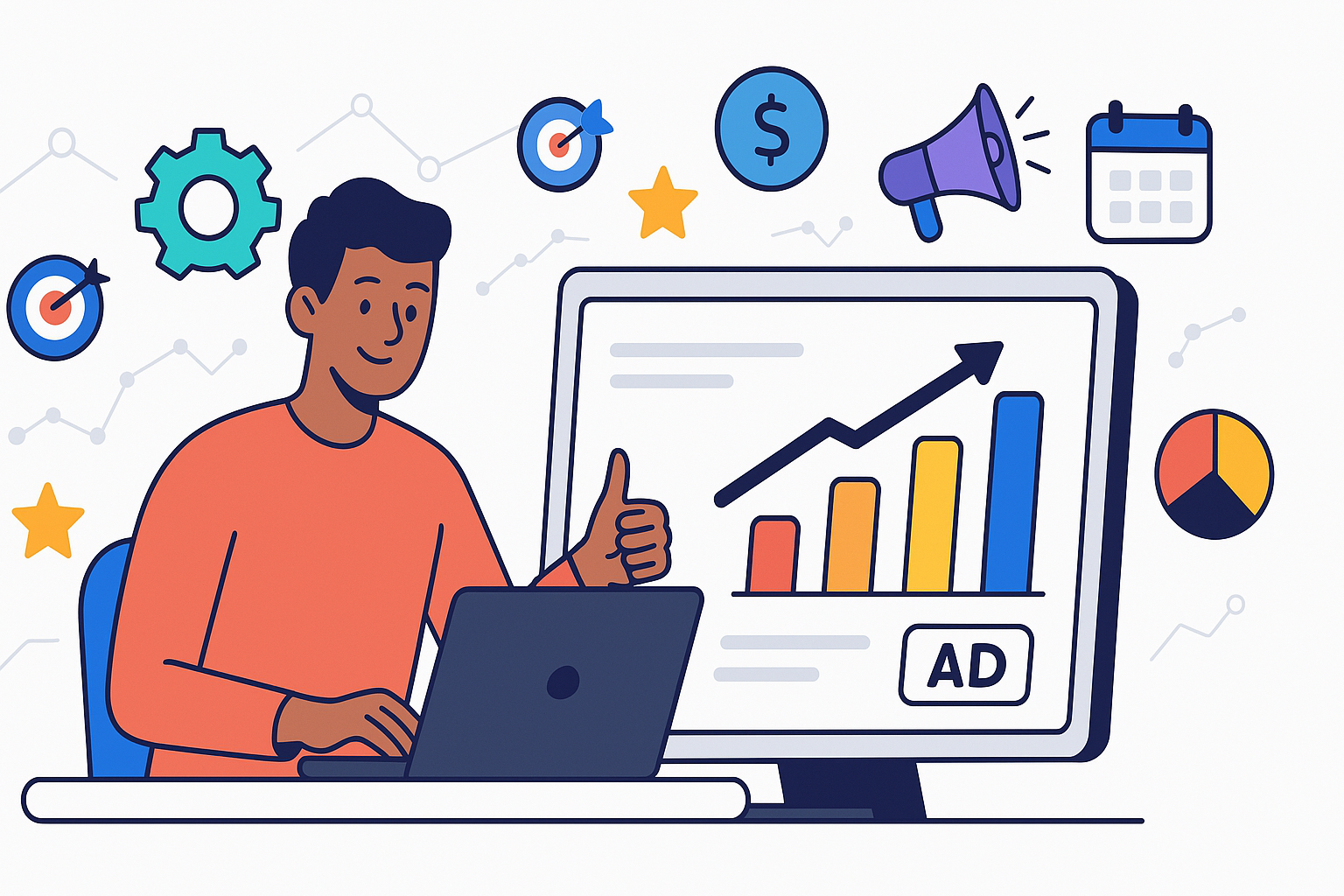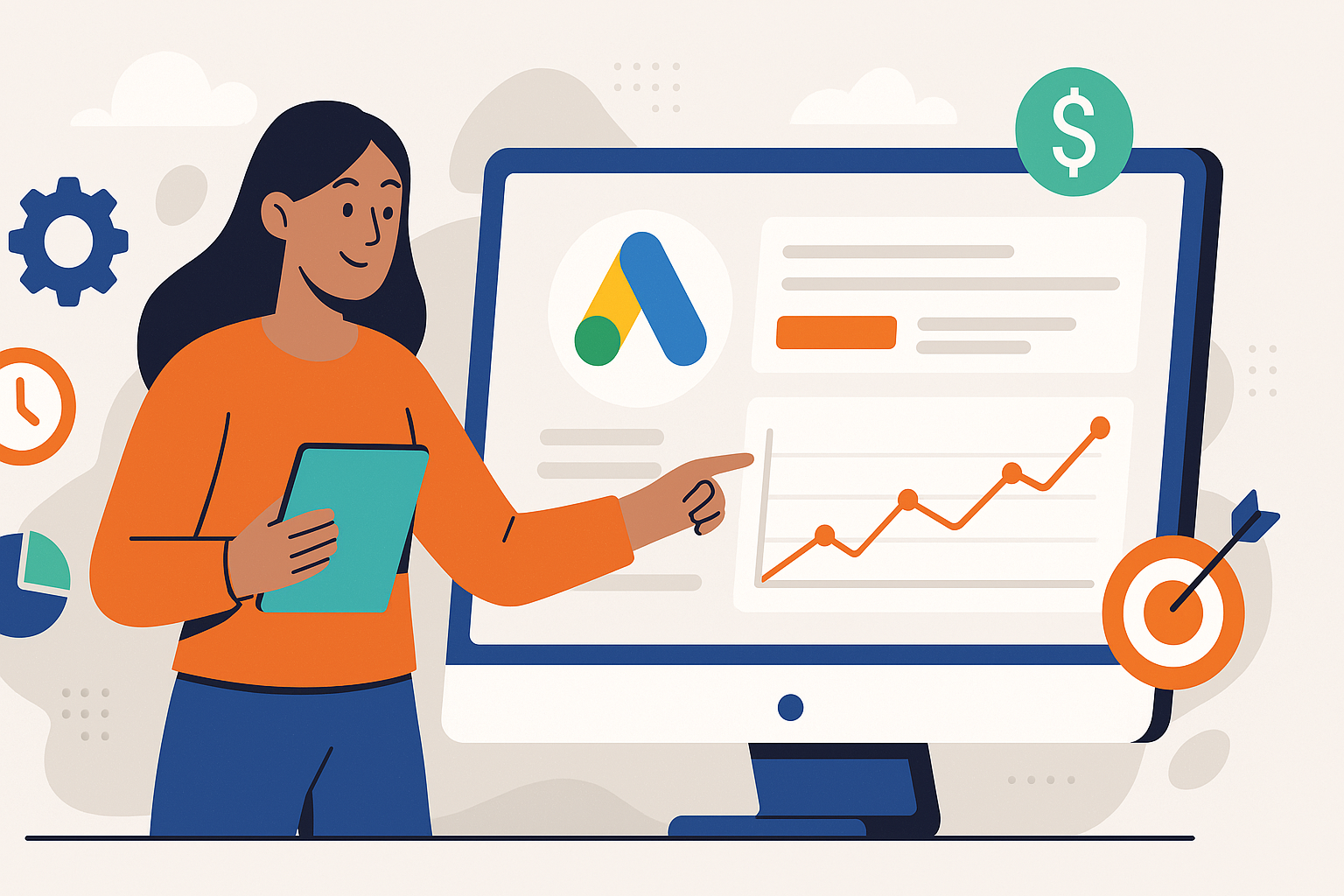Understanding Landing Page Cost: A Smart Investment Guide
by Francisco Kraefft on 16 Dec, 2024
Thinking about launching a new campaign? A high-converting landing page is often the linchpin of successful digital marketing efforts. It’s the focused environment where prospects become leads or customers. But a common question quickly arises: how much does a landing page cost? The answer isn't a simple number; it's influenced by various factors, from design complexity to the chosen creation method. Understanding these variables is crucial for setting a realistic budget and, more importantly, for viewing your landing page not just as an expense, but as a strategic investment poised to deliver measurable returns. Let's explore the landscape of landing page costs so you can make informed decisions for your business growth.
What Exactly Is a Landing Page (And Why Does It Matter)?
Before diving into costs, let's clarify what we mean by a 'landing page.' Unlike your website's homepage, which offers broad navigation and information about your entire business, a landing page is a standalone web page created specifically for a marketing or advertising campaign. Its primary superpower? Focus.
When a visitor clicks on a link in an email, a social media post, an online ad (like Google Ads or Facebook Ads), or other digital location, they 'land' on this page. It’s designed with a single, clear objective in mind, known as a Call to Action (CTA). This objective could be:
- Lead Generation: Capturing contact information (like name and email) via a form.
- Click-Through: Warming up a prospect and directing them to another page (e.g., a product page or checkout).
- Event Registration: Getting sign-ups for a webinar or workshop.
- Download Offer: Providing a valuable resource (e.g., ebook, whitepaper) in exchange for details.
- Direct Sale: Though less common for complex sales, some landing pages aim for an immediate purchase.
Why is this focus so critical?
- Minimized Distractions: Landing pages typically remove standard website navigation menus and other elements that could divert the visitor's attention from the intended action.
- Message Match: They ensure consistency between the ad or link the visitor clicked and the page they arrive on. This relevance builds trust and reduces bounce rates.
- Higher Conversion Rates: By concentrating on a single goal and tailoring the message, design, and CTA to a specific audience segment, landing pages are significantly more effective at converting visitors than directing traffic to a general homepage.
- Trackable Performance: Each landing page can be meticulously tracked, allowing you to measure the success of specific campaigns and optimize for better results. You know exactly which channels and messages are driving action.
Think of it this way: your website homepage is like the main entrance and lobby of your business building – it serves many purposes. A landing page is like a dedicated consultation room or event hall – designed for one specific interaction and outcome. Understanding this distinction highlights why investing in tailored landing pages is fundamental to performance marketing success.
Unpacking the Key Factors Influencing Landing Page Cost
The cost of creating a landing page isn't arbitrary. It's a sum influenced by several distinct components, each requiring different levels of effort and expertise. Understanding these factors will help you decipher quotes and allocate your budget effectively.
Here are the primary drivers of landing page cost:
-
Design Complexity & Customization:
- Basic Template Customization: Using a pre-built template with minor tweaks (logo, colors, images) is the least expensive option.
- Advanced Customization: Significant modifications to a template or a unique design built from scratch require more design hours and skill, increasing the cost.
- User Experience (UX) & User Interface (UI) Design: Professional UX/UI design ensures the page is intuitive, engaging, and optimized for conversions. This involves wireframing, prototyping, and user flow considerations, adding to the investment but significantly impacting results.
-
Compelling Copywriting:
- Basic Content: Simple headlines and descriptions require less effort.
- Conversion-Focused Copy: Crafting persuasive headlines, benefit-driven body text, clear calls to action, and potentially microcopy requires expertise in understanding the target audience and driving action. Professional copywriting is a critical investment for maximizing conversions.
-
Development & Implementation:
- Landing Page Builders: Using platforms like Unbounce, Instapage, or Leadpages often involves visual drag-and-drop interfaces, reducing technical development time (though expertise in using the tool effectively is still needed).
- Custom Coding (HTML/CSS/JavaScript): For highly unique designs, complex animations, or specific functionalities not supported by builders, custom coding is necessary. This requires skilled developers and naturally increases the cost.
-
Integrations:
- Basic Form Submission: Simply collecting leads via email notification is straightforward.
- CRM & Email Marketing Integration: Connecting your landing page form directly to your Customer Relationship Management (CRM) system (like HubSpot, Salesforce) or email marketing platform (like Mailchimp, ActiveCampaign) streamlines lead management but requires technical setup.
- Pixel & Tracking Implementation: Installing tracking pixels (Facebook Pixel, Google Ads Tag, Analytics) is essential for measuring campaign performance and remarketing. Proper setup is crucial.
- Other APIs: Integrating with other tools (e.g., scheduling software, payment gateways) adds complexity and cost.
-
A/B Testing Setup:
- Creating variations of your landing page (e.g., different headlines, images, CTAs) to test which performs best is vital for optimization. Setting up these A/B tests, whether within a builder or through custom code, requires additional effort.
-
Analytics & Reporting:
- Beyond basic tracking, setting up specific conversion goals, event tracking, and custom reports in platforms like Google Analytics 4 requires expertise to accurately measure ROI.
-
Imagery & Video:
- Using stock photos is cheaper than commissioning custom photography or videography. High-quality, relevant visuals are important but impact the budget.
Each of these elements contributes to the final landing page cost. A simple page using a template and basic copy will cost significantly less than a fully custom-designed, conversion-copywritten page with multiple integrations and A/B testing variants.
Exploring Different Creation Approaches & Their Cost Implications
Now that you understand the factors influencing cost, let's look at the different ways you can get a landing page created, and the typical cost structures associated with each.
1. DIY (Do-It-Yourself) with Landing Page Builders:
- How it Works: You use specialized software platforms (e.g., Leadpages, Unbounce, Instapage, Mailchimp Landing Pages, HubSpot Landing Pages) that offer pre-designed templates and drag-and-drop editors. You choose a template, customize it with your content and branding, set up basic integrations, and publish.
- Pros:
- Lower Initial Cost: Primarily involves a monthly or annual subscription fee.
- Speed: Can often get a basic page live relatively quickly.
- User-Friendly: Designed for non-developers (though a learning curve exists).
- Built-in Features: Often include A/B testing and basic analytics.
- Cons:
- Design Limitations: Can be restricted by template constraints.
- Requires Your Time: You need to invest time in learning the tool, designing, writing copy, and setting up integrations.
- Potential for Poor Results: Without expertise in conversion rate optimization (CRO), design principles, and copywriting, DIY pages may not perform well.
- Ongoing Cost: Subscription fees are recurring.
- Typical Cost: Monthly subscription fees typically range from $30 to $300+, depending on the platform and feature tier.
2. Hiring a Freelancer:
- How it Works: You find and hire an independent professional (designer, developer, copywriter, or a combination) through platforms like Upwork, Fiverr, or direct referrals.
- Pros:
- Access to Specific Skills: You can hire experts for design, copy, or development individually.
- Potentially More Customization: Good freelancers can offer more design flexibility than basic templates.
- Variable Cost Structure: Can be project-based or hourly, offering some flexibility.
- Cons:
- Finding the Right Talent: Quality varies greatly; vetting freelancers takes time and effort.
- Coordination Required: If hiring multiple freelancers (e.g., designer + copywriter + developer), you become the project manager.
- Inconsistent Strategy: Freelancers may focus solely on their task (e.g., design) without a holistic view of the marketing strategy or conversion optimization.
- Scope Creep Risk: Costs can escalate if the project scope isn't clearly defined upfront.
- Typical Cost: Highly variable. Simple template customization might be $200 - $800. A more custom design with decent copy could range from $800 - $3,000+. Costs depend heavily on the freelancer's experience, location, and the project's complexity.
3. Working with a Digital Marketing Agency (like iVirtual):
- How it Works: You partner with an agency that offers comprehensive landing page creation services, often as part of a larger marketing campaign.
- Pros:
- Expertise & Strategy: Agencies bring a team of specialists (strategists, designers, copywriters, developers, analysts) focused on results, not just deliverables.
- Data-Driven Approach: Reputable agencies (like us!) base decisions on data, employ CRO best practices, and focus on maximizing your ROI.
- Integrated Services: Landing page creation is seamlessly integrated with your overall marketing strategy, ad campaigns, and analytics.
- Accountability & Project Management: The agency handles coordination and ensures quality and deadlines are met.
- Performance Focus: Agencies are invested in the performance of the landing page, often including optimization and reporting.
- Cons:
- Higher Initial Investment: Generally involves a higher upfront cost compared to DIY or basic freelancer options.
- Less Direct Control (Potentially): You're trusting the agency's process, though good agencies collaborate closely.
- Typical Cost: Agency project costs for a high-quality, conversion-focused landing page typically start around $2,500 and can go up to $10,000+, depending on complexity, integrations, scope of work (including strategy, copy, design, development, testing, analytics setup), and the agency's positioning.
Choosing the right approach depends on your budget, timeline, internal resources, technical skills, and, most importantly, your performance expectations.
Typical Landing Page Cost Ranges: What Should You Budget?
Let's consolidate the cost implications into clearer budget ranges. Remember, these are estimates. The final price tag for your landing page will always depend on the specific factors and the creation approach you choose, as discussed previously.
-
DIY Landing Page Builders (Subscription Costs):
- Expect to pay: $30 - $300+ per month.
- Keep in mind: This cost doesn't account for your time spent learning, building, writing, and managing the page. It also doesn't include potential costs for premium templates, stock imagery, or advanced integrations not covered by the plan.
-
Freelancer (Project-Based Costs):
- Basic Template Customization & Simple Copy: $200 - $800
- Moderately Custom Design, Professional Copy, Basic Integrations: $800 - $3,000
- Highly Custom Design, Advanced Copywriting, Multiple Integrations, Basic Setup: $3,000 - $6,000+
- Keep in mind: Quality, reliability, and strategic input vary significantly. You'll likely need to manage the process closely.
-
Digital Marketing Agency (Project-Based Costs):
- Professional Landing Page (Strategy, Design, Copy, Development, Integration, Basic CRO): $2,500 - $7,500
- Advanced Landing Page (Complex Functionality, Extensive A/B Testing Setup, Deep Analytics Integration, High-End Design/Copy): $7,500 - $15,000+
- Keep in mind: This typically includes a strategic, data-driven approach focused on maximizing conversions and ROI, alongside project management and expertise across multiple disciplines.
Which Budget is Right for You?
- If you're just starting, have a very tight budget, and possess the time and willingness to learn, a DIY builder might be a viable starting point.
- If you need something more custom than a basic template but aren't ready for a full agency engagement, a carefully selected freelancer could work, provided you can manage the project effectively.
- If your landing page is critical to a significant marketing campaign, you value expertise, require a strategic approach, and prioritize measurable results (ROI), investing in a professional agency is often the most effective path.
Consider not just the upfront cost, but the potential return each option can generate.
Beyond the Price Tag: Measuring the ROI of Your Landing Page Investment
Focusing solely on the initial landing page cost misses the bigger picture. A landing page isn't just a digital brochure; it's a hardworking tool designed to achieve specific business objectives. Therefore, the most crucial metric isn't how much you spent, but how much value it generates. This means shifting focus to Return on Investment (ROI).
How do you measure landing page ROI?
-
Conversion Rate: This is the most fundamental metric. It's the percentage of visitors who complete the desired action (e.g., fill out a form, click the CTA button). A higher conversion rate generally means a more effective page.
- Formula: *(Number of Conversions / Total Visitors) * 100%*
-
Cost Per Conversion (or Cost Per Lead - CPL): This tells you how much you're spending on average to acquire one lead or achieve one conversion via that landing page.
- Formula: Total Campaign Spend (including ad spend + landing page cost) / Number of Conversions
-
Lead Quality: Not all conversions are equal. Are the leads generated relevant to your business? Are they progressing through your sales funnel? Integrating your landing page with your CRM allows you to track lead quality and downstream revenue.
-
Value Per Conversion: Estimate the average value a successful conversion brings to your business. For lead generation, this might be the average lifetime value of a customer multiplied by your lead-to-customer rate.
-
Overall ROI: Comparing the total value generated by the conversions against the total cost (landing page creation + associated ad spend).
- Formula: *[(Total Value Generated - Total Cost) / Total Cost] * 100%*
A seemingly 'expensive' landing page created by an expert agency might have a significantly higher conversion rate and generate better quality leads than a cheap DIY page. Over time, this high-performing page can deliver a much greater ROI, easily justifying the initial investment.
This is where a data-driven approach becomes essential. At iVirtual, we don't just build landing pages; we build conversion engines. We meticulously track performance, conduct A/B tests to optimize elements, and focus relentlessly on improving the metrics that matter to your bottom line. Investing in a landing page should be viewed through the lens of performance marketing – it's an investment designed to scale your business.
Conclusion
Determining your landing page cost involves understanding the interplay between design, copy, technical features, and your chosen creation method—DIY, freelancer, or agency. While budget ranges vary significantly, the wisest approach looks beyond the initial price tag. The true measure of a landing page lies in its ability to convert visitors and deliver tangible results. Prioritize clarity, focus, and a data-driven strategy to ensure your landing page isn't just an expense, but a powerful investment driving growth and maximizing your return on investment. Choose the path that aligns best with your resources and performance goals.
Ready to invest in landing pages that deliver measurable results? Let iVirtual's data-driven experts craft conversion-focused landing pages designed to scale your business. Contact us today for a consultation!


